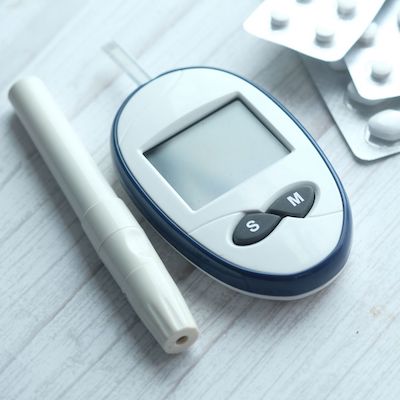Columbus: (614) 866-2477
Gahanna: (614) 939-9330
Lancaster: (740) 653-2656
Newark: (740) 344-8286
North Gahanna: (614) 478-2111
East Columbus: (614) 235-2323
Westerville: (614) 939-9330
Dublin: (614) 339-2000
Pickerington: (614) 545-4321
Lancaster: (740) 653-2656
Items filtered by date: March 2023
Choosing Custom or Over-The-Counter Orthotics

Many patients may be familiar with what orthotics are, but did you know there are different kinds? Essentially, orthotics are shoe inserts that can help relieve pain or correct deformities in the foot. There are two broad categories of orthotics. There are custom orthotics and over-the-counter orthotics. The former kind is custom-made by a podiatrist to fit your foot precisely, while the latter is not. Some patients are curious as to whether they should choose to wear custom or over-the-counter orthotics. There are several factors to consider when making this decision. For example, an individual might consider the fact that custom orthotics can generally be worn for longer periods because they have a long durable life. Also, custom-made orthotics can sometimes be more costly than over-the-counter orthotics because they are specifically designed for your foot. An individual might consider that over-the-counter orthotics are mostly widely accessible. If you are someone that is looking to choose a kind of orthotic, it is highly suggested that you contact a podiatrist for more information.
If you are having discomfort in your feet and would like to try orthotics, contact one of our podiatrists from Foot & Ankle Specialists of Central Ohio. Our doctors can provide the care you need to keep you pain-free and on your feet.
What Are Orthotics?
Orthotics are inserts you can place into your shoes to help with a variety of foot problems such as flat feet or foot pain. Orthotics provide relief and comfort for minor foot and heel pain but can’t correct serious biomechanical problems in your feet.
Over-the-Counter Inserts
Orthotics come in a wide variety of over-the-counter inserts that are used to treat foot pain, heel pain, and minor problems. For example, arch supports can be inserted into your shoes to help correct overarched or flat feet, while gel insoles are often used because they provide comfort and relief from foot and heel pain by alleviating pressure.
Prescription Orthotics
If over-the-counter inserts don’t work for you or if you have a more severe foot concern, it is possible to have your podiatrist prescribe custom orthotics. These high-quality inserts are designed to treat problems such as abnormal motion, plantar fasciitis, and severe forms of heel pain. They can even be used to help patients suffering from diabetes by treating foot ulcers and painful calluses and are usually molded to your feet individually, which allows them to provide full support and comfort.
If you are experiencing minor to severe foot or heel pain, it’s recommended to speak with your podiatrist about the possibilities of using orthotics. A podiatrist can determine which type of orthotic is right for you and allow you to take the first steps towards being pain-free.
If you have any questions please contact our offices located in Gahanna, Newark, Columbus, and Lancaster, OH . We offer the newest diagnostic and treatment technologies for all your foot and ankle needs.
Are Bunions Affecting Your Everyday Life?
Running Techniques

Many individuals all across the world choose to run regularly, either as a way to exercise or as a recreational activity. The biomechanics that are at play when an individual is engaged in running are significantly complex. For example, many different bones and muscles are working during a run to accomplish different objectives. One interesting aspect of foot biomechanics during running is that an individual might benefit if they use their feet to push down into the ground during a run. Although many runners might intuitively think they should use their feet to strike the ground and push off of the ground, a runner could potentially benefit from pushing down into the ground. This is because your body will require less energy to produce force and the manner in which your foot hits the ground could decrease one’s chance of injury. If you are someone that enjoys running, it is suggested that you contact a podiatrist to schedule an appointment.
If you have any concerns about your feet, contact one of our podiatrists from Foot & Ankle Specialists of Central Ohio. Our doctors can provide the care you need to keep you pain-free and on your feet.
Biomechanics in Podiatry
Podiatric biomechanics is a particular sector of specialty podiatry with licensed practitioners who are trained to diagnose and treat conditions affecting the foot, ankle and lower leg. Biomechanics deals with the forces that act against the body, causing an interference with the biological structures. It focuses on the movement of the ankle, the foot and the forces that interact with them.
A History of Biomechanics
- Biomechanics dates back to the BC era in Egypt where evidence of professional foot care has been recorded.
- In 1974, biomechanics gained a higher profile from the studies of Merton Root, who claimed that by changing or controlling the forces between the ankle and the foot, corrections or conditions could be implemented to gain strength and coordination in the area.
Modern technological improvements are based on past theories and therapeutic processes that provide a better understanding of podiatric concepts for biomechanics. Computers can provide accurate information about the forces and patterns of the feet and lower legs.
Understanding biomechanics of the feet can help improve and eliminate pain, stopping further stress to the foot.
If you have any questions please feel free to contact our offices located in Gahanna, Newark, Columbus, and Lancaster, OH . We offer the newest diagnostic and treatment technologies for all your foot and ankle needs.
Treatment for Severe Ankle Sprains

Most ankle sprains heal in roughly six weeks, and podiatrists recommend using the rest, ice, compression, and elevation method to help this process along. However, if someone sustains a more severe ankle sprain, termed as a Grade 3 sprain, more serious measures may be needed and healing may take longer. With a Grade 3 sprain, the ligament has been torn completely, and swelling is significant. The ankle is tender and black and blue. Motion is extremely limited, and bearing weight is out of the question. At this point, it is essential to have immediate medical help from a podiatrist. Because the joint is unstable, a cast, brace, or protective boot will likely be prescribed. Crutches also may be required. In addition, a series of exercises to increase strength and help reduce the chances of a re-injury is generally suggested. If you have experienced a severe ankle sprain, it is suggested that you visit a podiatrist as soon as possible.
Although ankle sprains are common, they aren’t always minor injuries. If you need your ankle injury looked at, contact one of our podiatrists from Foot & Ankle Specialists of Central Ohio. Our doctors can provide the care you need to keep you pain-free and on your feet.
How Does an Ankle Sprain Occur?
Ankle sprains are the result of a tear in the ligaments within the ankle. These injuries may happen when you make a rapid shifting movement while your foot is planted. A less common way to sprain your ankle is when your ankle rolls inward while your foot turns outward.
What Are the Symptoms?
- Pain at the sight of the tear
- Bruising/Swelling
- Ankle area is tender to touch
- In severe cases, may hear/feel something tear
- Skin discoloration
Preventing a Sprain
- Wearing appropriate shoes for the occasion
- Stretching before exercises and sports
- Knowing your limits
Treatment of a Sprain
In many cases, the RICE method (Rest, Ice, Compression, and Elevate) is used to treat ankle sprains. However, you should see a podiatrist to see which treatment option would work best with your injury. In severe cases, surgery may be required.
It is important to ask your doctor about rehab options after you receive treatment for your injury. Stretching, strength training, and balance exercises may help the ankle heal while also preventing further injury.
If you have any questions, please feel free to contact our offices located in Gahanna, Newark, Columbus, and Lancaster, OH . We offer the newest diagnostic and treatment technologies for all your foot care needs.
Complications of Diabetes to the Feet

Limb salvage refers to a type of surgery to save a limb that is at risk for amputation. Diabetes is one of the most common diseases that may lead to the need for limb salvage, usually of a lower extremity. The goal of this type of surgery is to restore stability and the ability to walk. Diabetics can be at high risk for neuropathy, which is nerve damage caused by high levels of blood sugar. This type of damage interferes with being able to feel sensation in the limbs and generally starts in the feet. The inability to feel sensitivity can lead to unnoticed injuries, possibly causing skin ulcers or infections. If the infection progresses, limb salvage may be necessary. If you are a diabetic patient, it is suggested that you include a podiatrist among your team of medical professionals for regular examinations of your feet that may prevent problems, possibly avoiding the need for more invasive surgical intervention.
Diabetic Limb Salvage
Diabetic limb salvage can be an effective way in preventing the need for limb amputation. If you have a foot ulcer and diabetes, consult with one of our podiatrists from Foot & Ankle Specialists of Central Ohio. Our doctors will assess your condition and provide you with quality foot and ankle treatment.
What Is Diabetic Limb Salvage?
Diabetic limb salvage is the attempt of saving a limb, such as the foot, that has an infected ulcer, from amputation. Podiatrists also try to make sure that there is enough function in the foot after the salvage that it is still usable. Those with diabetes experience poor blood circulation, which prevents proper healing of an ulcer. If the ulcer is left uncheck, it could become infected, which could result in the need for amputation.
Diabetes is the number one cause of non-traumatic amputations in the United States. Amputation has been found to lead to higher mortality rates. This translates into higher healthcare costs, and a reduced quality of life and mobility for amputees. Podiatrists have attempted to increase the prevalence of limb salvage in an attempt to solve these issues.
Diagnosis and Treatment
Limb salvage teams have grown in recent years that utilize a number of different treatments to save the infected limb. This includes podiatrists that specialize in wound care, rehabilitation, orthotics, and surgery. Through a combination of these methods, limb salvage has been found to be an effective treatment for infected limbs, and as an alternative to amputation. Podiatrists will first evaluate the potential for limb salvage and determine if the limb can be saved or must be amputated.
If you have any questions, please feel free to contact our offices located in Gahanna, Newark, Columbus, and Lancaster, OH . We offer the newest diagnostic and treatment technologies for all your foot care needs.
Diabetes and PAD are Linked
 Did you know that according to the CDC, more than 1 in 10 people in the US have diabetes? When people have diabetes, they lack insulin to properly metabolize food into energy. The result is heightened blood glucose levels that negatively impacts the body, including the feet, and increased risks for other conditions. Among these is peripheral arterial disease, or PAD, an often undiagnosed yet serious disease.
Did you know that according to the CDC, more than 1 in 10 people in the US have diabetes? When people have diabetes, they lack insulin to properly metabolize food into energy. The result is heightened blood glucose levels that negatively impacts the body, including the feet, and increased risks for other conditions. Among these is peripheral arterial disease, or PAD, an often undiagnosed yet serious disease.
What is PAD?
PAD impacts the peripheral arteries that supplies blood to the extremities, which become narrowed from plaque buildup. This progressive condition eventually leads to less blood flow to the limbs, increasing risks for non-healing ulcers, amputation, and more serious consequences like heart attack and stroke. Symptoms of PAD include:
- Pain, cramping, or fatigue during activity
- Skin paleness
- Decreased hair growth
- Legs that are cool to the touch
- Wounds that are slow-healing
Diabetes increases the risk of developing PAD
The link between diabetes and PAD stem from having similar risk factors:
- Being over 50 years old
- Smoking
- High blood pressure
- High cholesterol
- Obesity
Another link is that they both often lead to non-healing wounds or ulcers. For people with diabetes, nerve damage in their extremities, coupled with decreased immune function often lead to wounds that do not heal. For those with PAD, the lack of flow of oxygenated blood can result in developing sores. For many patients who have both diabetes and PAD, it is crucial to stay diligent about their foot health and make changes to their lifestyle. These changes include:
- Quit smoking
- Decrease blood pressure
- Decrease cholesterol
- Lose weight
- Exercise
Have regular visits with a podiatrist
A podiatrist who specializes in diabetic foot health and wound care is your best resource for diagnosing and treating both diabetes and PAD. At Foot and Ankle Specialists of Central Ohio, our team of board-certified podiatrists have the experience and skills to assess, diagnose, and manage these conditions. Whether you have had diabetes for years or you just noticed pain while walking, they provide the highest quality care so you can prevent further issues and maintain healthy feet.
Have questions about your risks for diabetes or PAD? Call (614) 339-2000 and schedule an appointment at any of our offices in the Columbus, Ohio area today!
Blog Archives
- April 2024
- March 2024
- February 2024
- January 2024
- December 2023
- November 2023
- October 2023
- September 2023
- August 2023
- July 2023
- June 2023
- May 2023
- April 2023
- March 2023
- February 2023
- January 2023
- December 2022
- November 2022
- October 2022
- September 2022
- August 2022
- July 2022
- June 2022
- May 2022
- April 2022
- March 2022
- February 2022
- January 2022
- December 2021
- November 2021
- October 2021
- September 2021
- August 2021
- July 2021
- June 2021
- May 2021
- April 2021
- March 2021
- February 2021
- January 2021
- December 2020
- November 2020
- October 2020
- September 2020
- August 2020
- July 2020
- June 2020
- May 2020
- April 2020
- March 2020
- February 2020
- January 2020
- December 2019
- November 2019
- October 2019
- September 2019
- August 2019
- July 2019


